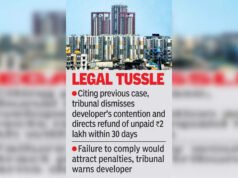Budget 2025 is likely to reflect a steadily lowering of ambition on big-ticket privatisation or strategic disinvestments that were announced with much fanfare in Budget 2022. L’affaire Rashtriya Ispat Nigam Ltd (RINL) — a state-owned enterprise operating the 7.3 million tonnes per annum steel plant in Vizag — exemplifies the National Democratic Alliance (NDA) regime’s waning appetite for the P word. In January 2021, the cabinet committee on economic affairs approved its privatisation but four years later, it has cleared a Rs 11,440-crore revival package. The government has also decided to put on hold privatisation of nine state-owned units, besides closing down nine ailing central public sector enterprises. All of this is in sharp contrast to Budget 2022 when it announced a sweeping agenda on privatisation which included Air India, BPCL, Shipping Corporation of India, Container Corporation of India, IDBI Bank, BEML, Pawan Hans, Neelachal Ispat Nigam Ltd, besides two public sector banks and a general insurance company. However, barring Air India and Neelachal Ispat Nigam Ltd which went to the Tata Group and the recent sale of Ferro Scrap Nigam to a Japanese company, the other transactions are on the back burner.
Strategic disinvestments therefore are in abeyance despite the government’s stated intention that it has no business to be in business. The U-turn on RINL reflects political-economy compulsions of the ruling dispensation that now depends on regional allies in Andhra Pradesh and Bihar. RINL is the first shore-based integrated producer of steel based in Andhra whose chief minister is more interested in its revival than privatisation. So, too, do thousands of workers of the steel plant. While RINL’s package provides a fresh lease of life — reflecting the Centre’s “holistic” approach towards public capital management — the big question is, how far will it go to revive the beleaguered steel maker? Or is it merely to enhance its valuation for privatisation in the future?
While the package will help RINL pay employees’ salary arrears including monthly salary bill and enable full production with two blast furnaces in January and three blast furnaces in August, it does not address the important reasons why it is in such a bad shape financially. RINL’s travails include the lack of a captive mine for iron ore and coal, cyclical markets, and a liquidity problem. Financial viability is not possible when it is forced to buy iron ore at market prices which are 10 times costlier than from captive sources. While the government has backtracked on the P word, RINL’s fortunes will not revive with the bailout. A solution that has been discussed at the Centre would be to merge it with the state-owned Steel Authority of India Ltd which has captive sources of raw materials to help RINL lower unit costs of steel production and achieve better capacity utilisation, which hit 63% last year.
There is also a precedent for this when HPCL was taken over by another state-owned entity, Oil and Natural Gas Corporation, in FY18. REC too was taken over by the state-owned Power Finance Corporation in FY19. Once RINL becomes viable, more resources can be devoted to modernisation by replacing its blast furnaces with electric arc furnaces to reduce emissions. As it produces long products like wire rods, billets, rebars, and rounds, RINL definitely can be an integral part of the NDA’s $1.4-trillion infrastructure push for growth which is highly steel-intensive in nature.










